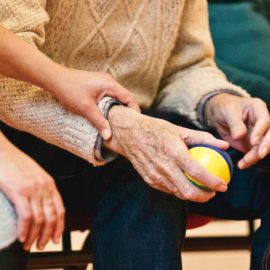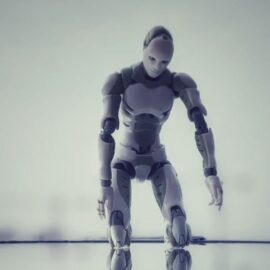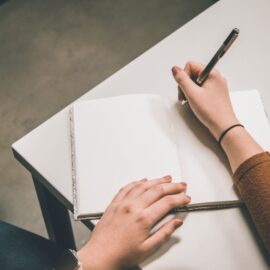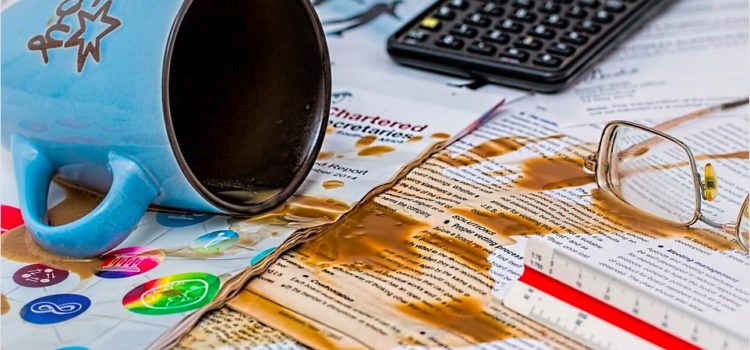
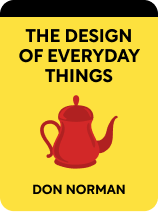
This article is an excerpt from the Shortform book guide to "The Design of Everyday Things" by Don Norman. Shortform has the world's best summaries and analyses of books you should be reading.
Like this article? Sign up for a free trial here .
What are the different kinds of errors? How can designs work around these errors so that humans make them less?
There are several kinds of errors that we consider “human errors.” But not all errors are the fault of the people using an object. Sometimes, these “errors” come about due to design issues.
Read more about the different kinds of errors and how to consider them when designing.
Different Kinds of Errors: How Do We Define Error?
What, specifically, counts as an error? Are there different kinds of errors? The term “error” applies to any action that differs from the general understanding of appropriate behavior. In this context, “error” is not the same as “accident”: an error is an incorrect behavior that may or may not lead to an accident (an event that causes harm). Errors can be classified as either “slips” or “mistakes.”
- A “slip” is an error of execution. Slips happen when we have the right goal for an action, but end up performing a different action without thinking (like accidentally putting a chopstick in your drink instead of a straw). Slips happen unconsciously—they are errors of doing.
- A “mistake” is an error of evaluation that happens when we execute an action correctly, but our goal, plan, or understanding of the situation is wrong. Mistakes happen at the conscious level—they are errors of thinking.
The defining difference between slips and mistakes is that slips happen subconsciously while mistakes involve conscious choices. Slips and mistakes can be further broken down into subtypes. Mistakes can be broken down into knowledge-based, rule-based, and memory-lapse mistakes. Slips can be classified as either memory-lapse or action-based. Action-based slips can then be broken down further into three types. Each of these subcategories will be defined in the following sections.
Slips
One of the common kinds of error are slips. Most everyday errors are slips, not mistakes. Remember, the execution phase of action is mostly subconscious. We decide what action we want to take, and we see the results, but the actual process between thinking and doing is below our level of awareness. Slips happen during that subconscious transition from thinking to doing.
The fact that slips happen subconsciously and look different for different people leaves a lot open to interpretation. Sigmund Freud proposed that slips were brief glimpses into someone’s subconscious mind. (Shortform note: This is where we get the phrase “Freudian slip.”) Most modern psychologists agree that slips are more formulaic and unlikely to reveal hidden secrets.
Counterintuitively, slips happen more frequently to experts than beginners. Beginners use conscious thought to work through every step of a task, so the chance for subconscious slips is low. But experts have overlearned the same task after years of practice, so the process no longer requires conscious attention and is executed subconsciously.
There are two classes of slips: memory-lapse and action-based.
- Memory-lapse slips involve simple forgetting, like forgetting your phone at home or driving away with your coffee cup still resting on top of the car.
- Action-based slips involve simple human blunders, like pouring cream into your coffee and then putting the coffee cup in the refrigerator rather than the cream. The goal of putting cream back into the refrigerator was correct, but the action was mistakenly applied to the coffee instead.
Action-Based Slips
Action-based slips can be broken down even further into subtypes, including capture slips, description-similarity slips, and mode errors.
- Capture slips happen when something we intend to do overlaps with something we frequently do (or did recently), and the overlap makes us accidentally switch to the more familiar task. This is what happens when we are “on autopilot.” If you’re driving to a friend’s house, but the first half of the drive is identical to the route you take to work every day, you’re likely to drive right past the turn for your friend’s house. The familiar activity (driving to work) has captured the new activity (driving to a friend’s house).
- The opportunity for the familiar activity to capture the new activity happens when we forget that we’re supposed to be focusing on the new activity. The element of forgetting means that capture slips can also be classified as memory-lapse errors.
- Description-similarity slips happen when two objects are so similar that we mistakenly perform the right action on the wrong object. If there are two identical switches mounted above your kitchen sink, accidentally hitting the switch for the garbage disposal instead of the kitchen light is a description-similarity slip.
- Mode errors happen when there is one control for multiple functions, such as a universal remote. If you want to turn the TV volume up, but the remote is set to “auxiliary mode,” you may accidentally turn up the volume on a different device.
- Mode errors can also have much more serious consequences, as in the case of an airplane crash caused by a mode error involving the auto-pilot system. The same instrument was used to control both vertical speed and angle of descent, so toggling between the two variables required switching modes. In this case, the pilot entered the correct value for angle of descent, but he did not realize the equipment was still set to the vertical speed mode.
Mistakes
Another one of the commons kinds of error are mistakes. Mistakes are the result of conscious choices based on faulty information, misinterpretation, or simple forgetting. Mistakes can be classified as knowledge-based, rule-based, or memory-lapse mistakes (not to be confused with memory-lapse slips).
- Knowledge-based mistakes happen when we have incomplete or incorrect information to work with, leading us to misunderstand the situation and therefore respond inappropriately. Knowledge-based mistakes usually happen in novel situations where we have no applicable prior knowledge to pull from.
- Rule-based mistakes, on the other hand, happen in familiar contexts where we’re aware of the “rules” of how to act. These mistakes happen in three ways: misinterpreting the situation and consequently selecting the wrong rule; selecting the correct rule, but the rule itself creates problems; or selecting the right rule, but misinterpreting the results.
- The common tendency to set thermostats to extreme temperature in the hopes that it will heat or cool the room faster is an example of the first type of rule-based mistake, based on a faulty conceptual model of the heating system.
- Memory-lapse mistakes are different from memory-lapse slips. In memory-lapse mistakes, the lapse in memory happens during the goal, plan, or evaluation phase, not during execution. For example, if you get distracted while searching for something in various boxes, you might forget which boxes you’ve already checked and end up mistakenly rechecking some of them.
Now that you know about the different kinds of error, you can consider how to prevent error in design.

———End of Preview———
Like what you just read? Read the rest of the world's best book summary and analysis of Don Norman's "The Design of Everyday Things" at Shortform .
Here's what you'll find in our full The Design of Everyday Things summary :
- How psychology plays a part in the design of objects you encounter daily
- Why pushing a door that was meant to be pulled isn't your fault
- How bad design leads to more human errors


